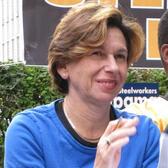These biographies introduce unsung Jewish heroes and leaders of the Labor Movement.
Biographies of Jewish Labor Leaders
How to cite this page
Jewish Women's Archive. "Biographies of Jewish Labor Leaders." (Viewed on January 30, 2025) <https://jwa.org/teach/livingthelegacy/biographies>.
















